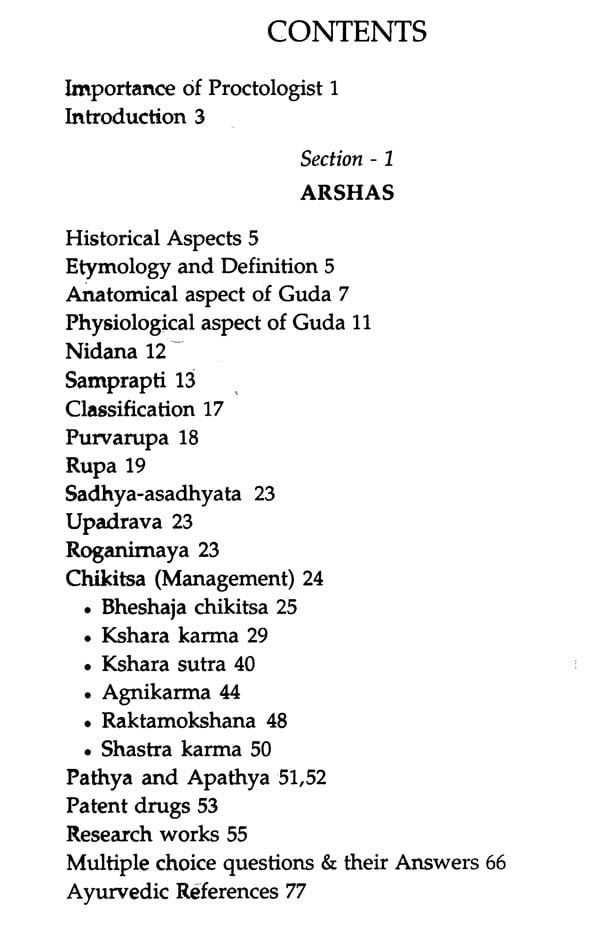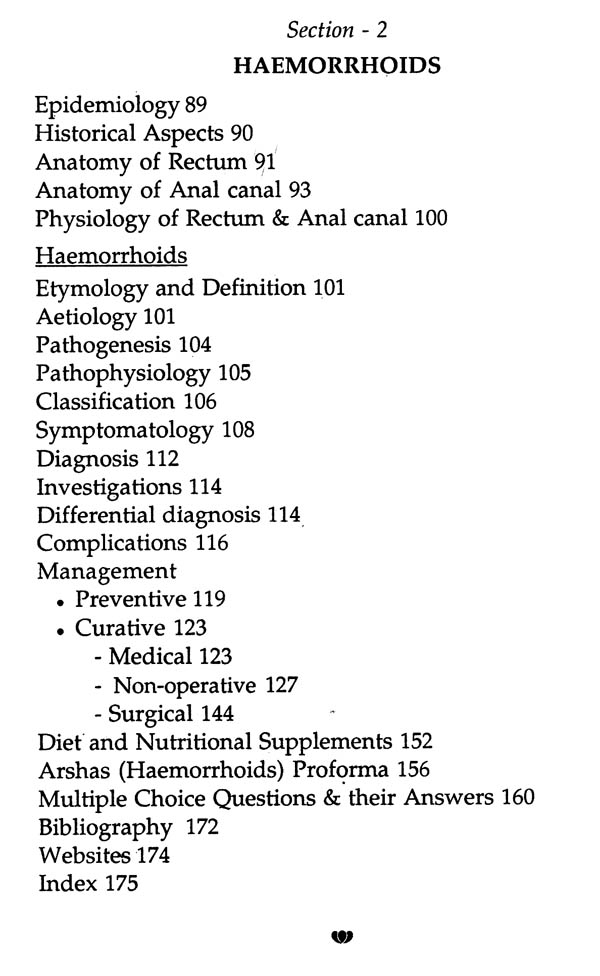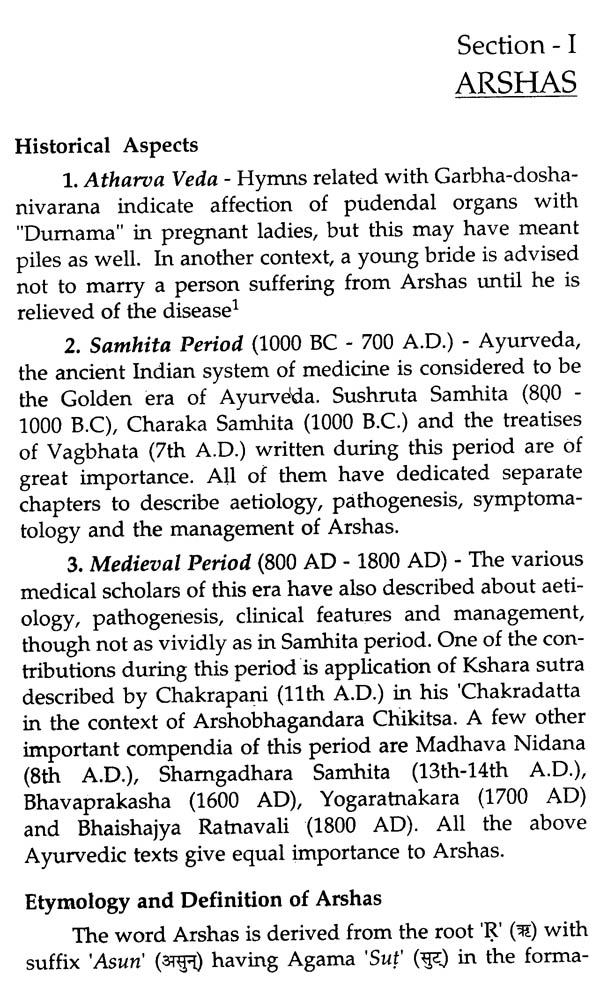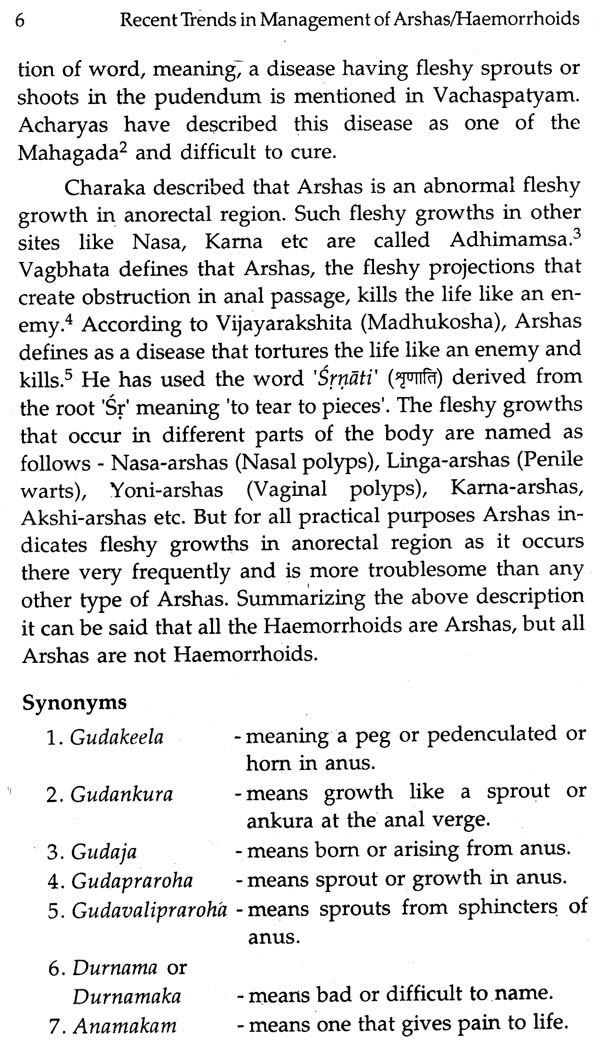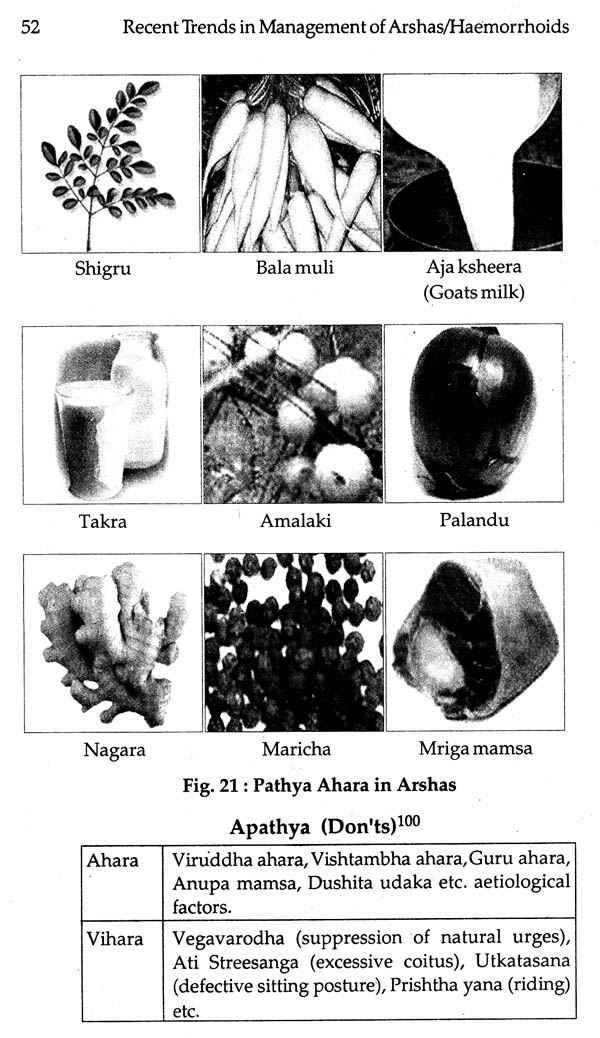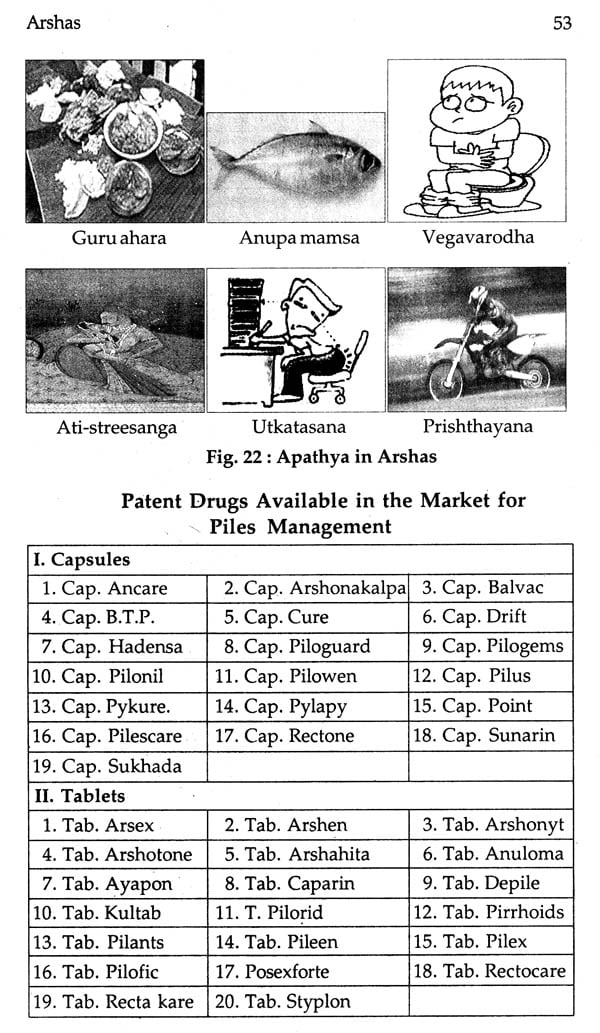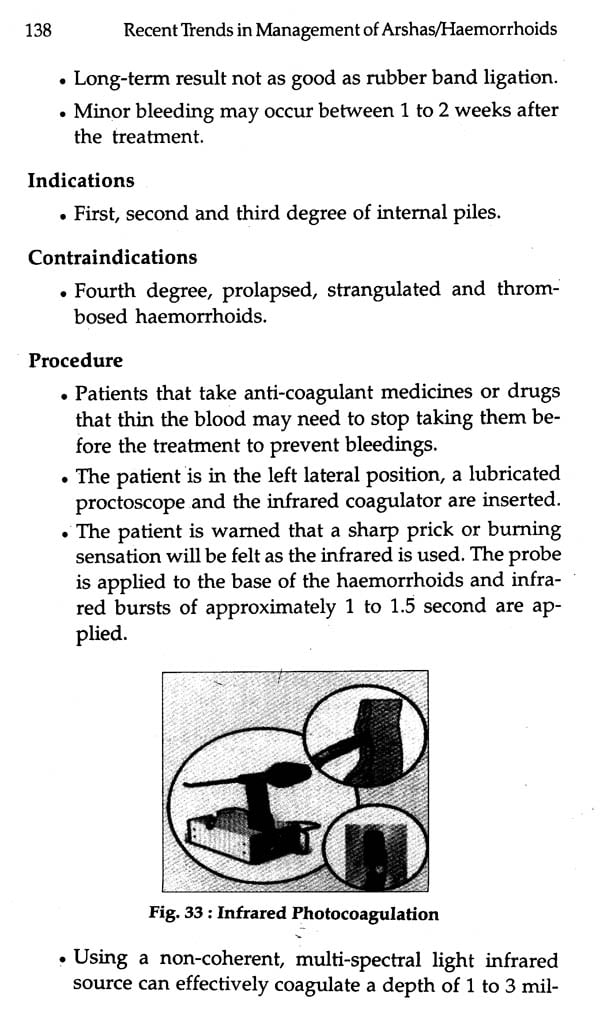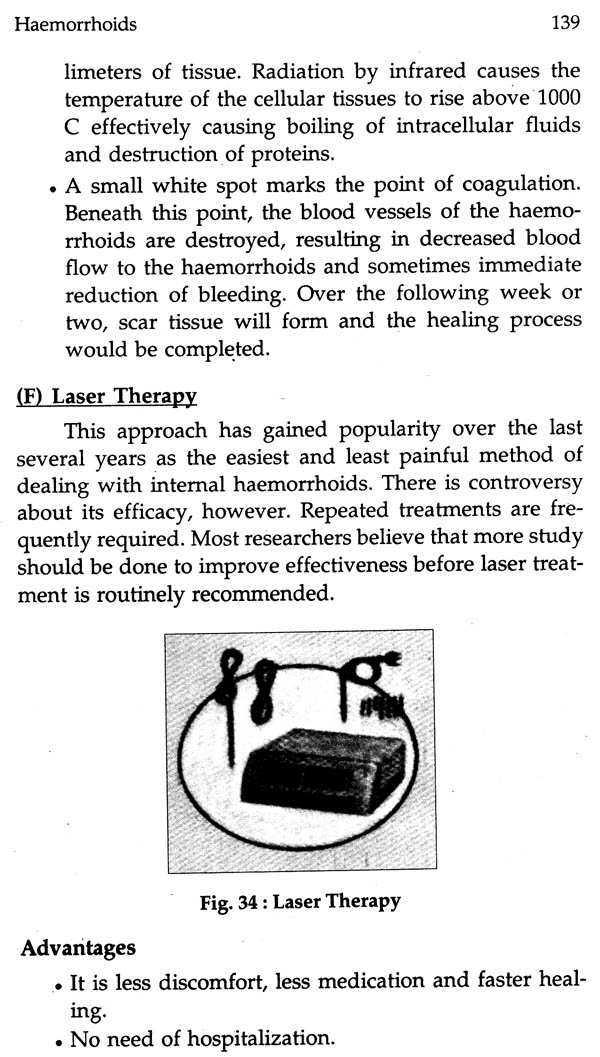
Recent Trends in The Managements of Arshas/Haemorrhoids
Book Specification
| Item Code: | NAV527 |
| Author: | Hemantha Kumar |
| Publisher: | Chaukhamba Sanskrit Pratishthan |
| Language: | English |
| Edition: | 2015 |
| ISBN: | 9788170846249 |
| Pages: | 180 (Throughout B/W Illustrations) |
| Cover: | HARDCOVER |
| Other Details | 9.00 X 6.00 inch |
| Weight | 310 gm |
Book Description
It gives me immense pleasure to intro- duce the revised second edition of this book "Recent Trends in the Management of Arshas/Haemorrhoids" This book deals with detailed description regarding Arshas/ Haemorrhoids including aetiopathogenesis, symptomatology and management. The author has taken keen interest to discuss and evaluate the various modali- ties of treatment with advantages and disadvantages of each type of treatment. The author collected the various research works on Arshas are conducted in different insti- tutions in India and added multiple choice questions of Arshas and Haemorrhoids in his book. This type of work was really needed and is of great help for students, re- search scholars as well as for clinicians. Precise description in simple language is the special feature of the book. I hope the author will keep his interest to bring out few more such publications.
Ayurveda has immense potential to help in the solu- tion of many challenging and unresolved problems of medical science. The development of surgical and para surgical procedures have remained neglected for long. Arshas is considered as one of the Mahagada (difficult to treat). It has been discussed in detail in Ayurvedic classics specially the Sushruta Samhita considered to be special- ized in surgical practice. Along with detailed surgical technique, a parasurgical measures i.e. Kshara karma (Caustic cautery), Kshara sutra (Caustic thread), Agnikarma (Thermal cautery) and Raktamokshana (Blood letting) has been highlighted. It is a Day-care and Ambulatory procedure, which has wide range of acceptability So, I felt it is berieficial to include the knowledge regarding Ayurveda and Contemporary Sciences under one book for students, clinicians, academicians, who can extract information in a shortest possible time and with least possible effort. The present book consists of critical analysis and discussion on various aspects of Arshas/Haemorrhoids. Here a sincere effort has been tried to apply the proposed different treatment modalities would be better un- derstood, how and when to institute the therapy The visual illustrations of different types of Arshas/ Haemorr- hoids with recent trends in the management are enlight- ened. The various research works on Arshas are con- ducted in different Institutions like Bananas Hindu Uni- versity, Gujarat Ayurveda University etc. also mentioned. All information of present medicaments of Arshas is described.
I believe that this publication highlighting an important and pioneering work on surgical aspect of Ayurveda will serve as a landmark in the development of Research. It will also serve as a handbook for establishment of a spe- cialty clinic for treatment of Piles. I added recent modali- ties in the mangement of Arshas/Haemorrhoids and more photos along with multiple-choice questions. I have at- tempted to put before the students, research scholars and practitioners a concise and comprehensive book related to Ayurvedic and Modern aspects of Arshas.
I sincerely hope that this book will be useful to you. I appeal to all my friends, students and readers that I shall gratefully acknowledge any suggestions to further improvement of this book.
Ayurveda is the science of life. Since time immemo- rial, Ayurveda has been showing the ideal way of living, which promises a disease-free, happy and long life. The Ayurvedic branches are like that of ocean of knowledge consisting of many newer concepts in concise form. The Shalya Tantra a prime branch is rich in many aspects of modern surgical concepts.
Piles or Haemorrhoids can affect anyone, anytime and anywhere. Haemorrhoids have plagued humankind since time immemorial, yet many misunderstandings re- garding Haemorrhoidal complaints and disease still exist. Many laypersons and physicians do not understand the anorectal area and the common diseases associated with it. Haemorrhoids or piles, one of the commonest disease occurs in anorectal region. Its incidence increases with advancing age; at least 50% of people over the age of 50 years have some degree of haemorrhoidal symptoms. Recent statistics reveals that irrespective of age, sex, Socio economic status, people suffer from piles. Nowadays every person suffering from any one of the complaints of piles during their lifetime. It is certainly one of the commonest ailments that affect mankind. The disease Haemorrhoids or piles is dealt rationally under the concept of Arshas, however it includes some other fleshy masses like polyps, warts etc., the food habits and sedentary life styles of modern man increases the rate of incidence of Arshas.
Acharya Sushruta, the father of Indian Surgery described about this disease in detail in his Sushruta Samhita. The prime etiopathogenic factor of Arshas is Mandagni ie., hypo function of digestive enzymes, which in turn leads to constipation, prolonged contact of accu- mulated Mala or excretory material to Gudavali causes development of Arshas. It is one of the eight Mahagada and difficult to cure.
Sushruta, the pioneer in the field of Surgery, de- scribed four principal therapeutic measures in the man- agement of Arshas ie. Bhesaja Chikitsa (Medical treat- ment), Kshara karma (Caustic therapy), Agnikarma (Thermal cautery) and Shastra karma (Surgery). These measures in definite order are suggestive of similar meth- ods to be preferred first. Among those the Parasurgical procedures like Kshara karma, Kshara sutra (Caustic thread), Agnikarma and Raktamokshana (Blood letting) are minimal invasive procedures. These procedures are simple, very safe, effective, ambulatory and minimal or no complications, unhazardous and easily acceptable by the patients. There is minimal interference in patient's routine work. It is also effectively administered to aged patients and those unfit for work.
The modern modalities of treatment in piles are Scle- rotherapy, Rubber band ligation, Infrared Photocoagula- tion, Cryosurgery and Haemorrhoidectomy and others. Modern science has very little to offer in terms of medical treatments of piles.
This attempt to review the concepts of Ayurveda and modern science in all aspects i.e., Aetiology, Pathogenesis, Classification, Prognosis, Complications, Management and recent research works of Arshas/Haemorrhoids.
